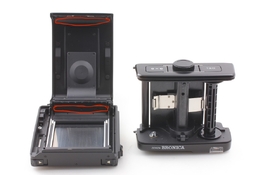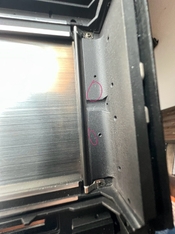Steven Lee
Member
One of my film backs for the Bronica GS-1 started to scratch film. Strangely, only some film stocks are affected. Perhaps this depends on the thickness of the film base and robustness of the emulsion. FP4+ and Kentmere 100 seem to be the most prone to scratching.
I have examined every square millimeter of it and I failed to identify a single place where film touches anything other than the backing paper. The pressure plate (behind the backing paper) presses film against the rails. The spools and rollers in the back all interact with the packing paper only. There's no contact between film's emulsion side with anything else.
Also, there's usually a single frame (or two) that are affected.
What tricks have you used in the past to chase down the source of scratches?
[EDIT] Full sized scan.
I have examined every square millimeter of it and I failed to identify a single place where film touches anything other than the backing paper. The pressure plate (behind the backing paper) presses film against the rails. The spools and rollers in the back all interact with the packing paper only. There's no contact between film's emulsion side with anything else.
Also, there's usually a single frame (or two) that are affected.
What tricks have you used in the past to chase down the source of scratches?
[EDIT] Full sized scan.



 .
.

